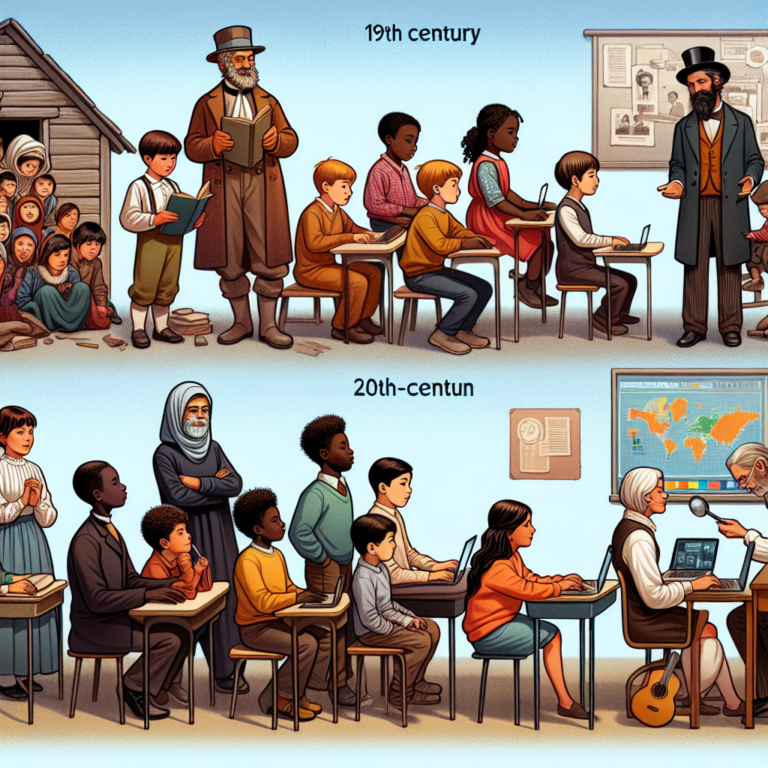Progress in Education Reform in Canada
Canada has long been recognized for its high-quality education system, which serves as a model worldwide. However, like all educational systems, it is not immune to the need for reform and improvement. As the world evolves, so too must the approaches to education to ensure that students are prepared for the challenges of the future. In this article, we’ll delve into the significant strides Canada has made in education reform and how these changes aim to enhance the quality of education across the country.
Understanding Education Reform in Canada
Education reform is a broad term that encompasses a range of initiatives aimed at improving educational outcomes. In Canada, education reform efforts have concentrated on increasing student engagement, integrating technology, promoting inclusivity, and ensuring that the curriculum is relevant in today’s society.
Embracing Technology in the Classroom
One of the hallmarks of modern education reform is the integration of technology into the learning environment. Canadian educators recognize that digital literacy is a crucial skill for the 21st century, and there has been a concerted effort to incorporate technology into teaching and learning practices.
Inclusivity and Cultural Awareness
Canada’s commitment to diversity is reflected in its education reform initiatives. Schools are increasingly emphasizing the importance of inclusivity, equity, and cultural awareness in the curriculum, ensuring that all students see their backgrounds and experiences represented in their education.
Curriculum Relevance
Ensuring that students are learning skills and knowledge that are relevant to the current and future job market is another focus of Canada’s education reform. This involves not only updating the content of the curriculum but also adopting teaching methods that promote critical thinking, creativity, and problem-solving.
Key Areas of Education Reform
Education reform in Canada targets multiple facets of the education system. Here, we explore a few of the key areas where significant progress has been made.
Innovative Teaching Methods
Traditional lecture-based teaching methods are giving way to more dynamic and interactive approaches. Project-based learning, collaborative work, and experiential opportunities are becoming more commonplace in Canadian classrooms.
Enhanced Professional Development for Educators
Recognizing that high-quality teaching is central to student success, there has been an increased investment in professional development for educators. This includes training in new teaching methodologies, cultural competency, and the use of technology in the classroom.
Focus on Mental Health and Well-being
Canadian education reform acknowledges the importance of student mental health and well-being. Schools are developing programs and resources to support students’ mental health, recognizing that a student’s emotional state can significantly impact their ability to learn and succeed.
Streamlining the Path to Post-Secondary Education
Efforts are being made to streamline the transition from secondary to post-secondary education, ensuring that students have the guidance and support they need to make informed decisions about their future.
The Impact of COVID-19 on Education Reform
The COVID-19 pandemic has accelerated certain aspects of education reform, particularly when it comes to technology in the classroom. The shift to remote learning necessitated a rapid adoption of digital tools and highlighted the importance of flexibility and adaptability in the education system.
Rapid Deployment of Digital Learning
Schools across Canada had to quickly implement digital platforms for remote learning, which has had a lasting impact on how technology is used in education.
Addressing the Digital Divide
The pandemic also underscored the digital divide, prompting initiatives to ensure that all students have access to the technology and connectivity they need to participate in digital learning.
Rethinking Assessment Methods
With the disruptions caused by the pandemic, educators have been reevaluating assessment methods, exploring alternatives to traditional exams that better reflect students’ understanding and abilities.
Success Stories in Canadian Education Reform
While there are challenges to any reform process, there have been numerous success stories that demonstrate the positive effects of these changes in the Canadian education system.
British Columbia’s Curriculum Overhaul
British Columbia’s recent curriculum overhaul is a prime example of comprehensive education reform. The province implemented a new curriculum that emphasizes personalized learning, flexibility, and a focus on core competencies like communication, critical thinking, and social responsibility.
Ontario’s Focus on STEM Education
Ontario has made significant strides in promoting science, technology, engineering, and mathematics (STEM) education. The province has invested in resources and training to help teachers inspire students in these subjects, recognizing their importance for future job markets.
Quebec’s Inclusive Education Approach
Quebec has been at the forefront of inclusive education, implementing policies and programs that support students with disabilities and those from diverse backgrounds, ensuring that all students have the opportunity to succeed.
Challenges and Considerations for Continued Reform
Despite the progress made, education reform in Canada is an ongoing process with several challenges that need to be addressed.
Ensuring Equitable Access to Resources
One of the biggest challenges is ensuring that all students, regardless of their socio-economic background, have equal access to high-quality education and resources.
Balancing Local Autonomy with National Standards
Canada’s education system is decentralized, with provinces and territories responsible for their own education systems. Balancing local autonomy with the need for national standards and consistency remains a complex issue.
Engaging Stakeholders
Effective education reform requires the engagement of all stakeholders, including educators, parents, students, and policymakers. Fostering collaboration and open communication is essential for successful reform initiatives.
Conclusion: The Future of Education in Canada
Education reform in Canada is a dynamic and ongoing process. While there have been significant achievements in improving education, the work is far from over. Continued focus on innovation, inclusivity, and relevance will be key to maintaining Canada’s reputation for providing high-quality education. As Canadian society continues to evolve, so too will the strategies and approaches used to educate the next generation, ensuring that they are equipped with the skills and knowledge to thrive in an ever-changing world.
In the end, the progress in education reform in Canada serves as a reminder of the importance of continually striving for excellence in education. By embracing change and innovation, Canada can ensure that its education system remains responsive to the needs of students and the demands of a global society.










